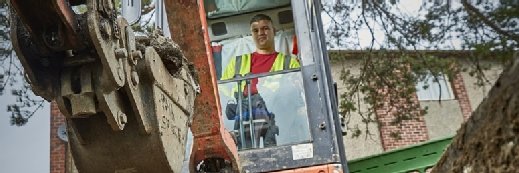
Openreach
UK fibre forges forward, but further altnet consolidation likely
Moody's research finds UK roll-out of fibre broadband continues to progress, although take-up remains low compared with Europe
Research from Moody’s Ratings has claimed the market is likely to encounter a series of headwinds, especially in the independent altnet sector, and that take-up of fibre remains low compared with the rest of Europe.
It said the big picture is that more operators are gaining scale, including some altnets. The companies with full-fibre coverage of at least a million households include BT Group and subsidiary EE Limited; Virgin Media O2 (VMO2); CityFibre; Community Fibre; Hyperoptic; the recently merged Netomnia/Brsk; and Nexfibre.
The report added that while roll-out targets for BT, VMO2 and Nexfibre remain unchanged from 2023, the overall dynamics have shifted. BT has managed to hit its full-fibre roll-out target of one million premises passed per quarter, or four million premises per year. Nexfibre has provided concrete evidence of meeting its targets, while VMO2 has chosen to step up its roll-out to complete the full upgrade of its cable network by 2028.
Yet the analysis also warns that fibre network take-up remains relatively low. It was 30% as of September 2023, and Moody’s cited data from UK communications regulator Ofcom showing that it typically takes more than four years after roll-out is completed to reach a take-up rate of over 50%.
The research showed that take-up rose only to 30% in September 2023 from 27% a year earlier. BT said it aims to improve its current take-up rate to 40%-55% by fiscal 2028-30 from 34% as of fiscal 2024, and 30% as of fiscal 2023.
Take-up rates for altnets fell to 15% in 2023 from 18% in 2022 because of the material increase in households covered. Altnets are said to have accelerated their roll-out, but challenging conditions may slow progress. Moody’s noted that such operators may need to consolidate and find it tougher to raise financing with interest rates higher for longer and network construction costs higher than in initial business plans. BT’s expanded fibre roll-out is also said to be contributing to the challenge.
Generally, Moody’s expects full-fibre competition, particularly in areas where the company has yet to introduce fibre, to be one of the drivers for ongoing customer losses at BT’s Openreach broadband division. It thinks competition will step up in part because altnets are switching focus from building out their networks to acquiring customers.
Read more about UK broadband
- Norfolk County Council looks to the skies to provide ultra-fast broadband: Complement to £5bn full-fibre broadband initiative sees IT and business consultancy collaborate with County Council using satellite infrastructure to successfully accelerate delivery across several industrial sites.
- VMO2, MS3, Brsk report gigabit gains: UK full-fibre broadband boom continues as major provider allows 20,000 more homes in Milton Keynes to gain access to 2Gbps connectivity, while leading altnets record deployment landmarks.
- CityFibre, Nexfibre gain further gigabit ground in southern England: UK’s leading independent provider makes full-fibre available to majority of homes and businesses in West Sussex county town, while growing gigabit broadband wholesaler reveals plans to deliver it to more than 15,000 premises in Buckinghamshire.
- Neos Networks advances Oxfordshire GigaHubs project: More than 180 public service sites, from local GP practices to schools, community centres and the authority’s own IT estate, are now connected with full-fibre connectivity as part of a County Council programme.
The report observed that BT and VMO2 are at different stages of their fibre development, with differing consequences for their finances and credit quality. It added that VMO2’s new network company (Netco) may pose a competitive threat to BT on the wholesale side, allowing VMO2 to focus more on its full-fibre roll-out and the generation of wholesale revenue; create a more flexible structure for mergers and acquisitions; and potentially allow the company to take advantage of different funding structures.
While Moody’s previously expected Openreach current broadband losses to improve moderately from fiscal 2025, it noted that the company has said it expected a further deterioration in fiscal 2025, with the overall number being “moderately higher than 500,000” if current difficulties continue.
After fiscal 2025, it forecasts this number to gradually reduce to around 2% of the overall broadband base, but the risk of higher losses remains. This trend, it said, was a result of stagnation in the broadband market because of a slowdown in new home construction and slower broadband adoption.








